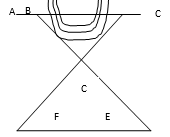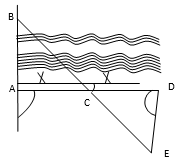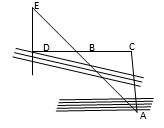Survey is an applied science which has mathematical orientation in examining and making careful measurement. Various surveying methods are normally used for two distinct purposes.
BRANCHES OF SURVEY
Survey may be classified based on:
THE PURPOSE: The branches of survey identified based on their principal purposes are
GEODICTIC SURVEYS: These are high accuracy surveys concerned with the shape of the earth or position, fixing of points which provides control for lower accuracy survey
TOPOGRAPHICAL SURVEYS: These are survey works based on the location of the main artificial or natural features of the earth including hills, valleys, well, villages, towns, railways lines etc.
CADASTRAL SURVEYS: These are survey works based on the preparation of plans, showing and defining the legal property boundaries
ENGINEERING SURVEY: These are the preparatory aspects of engineering works to its execution. The common types are roads rails dams, channels and other types construction works
OTHERS: The several other types that can be identified are Geographical Survey, Geological Survey and Military Survey.
THE PRINCIPAL TECHNIQUES FOR SURVEYING
The principles techniques used for survey include
THE FUNDAMENTAL PRINCIPLES OF SURVEYING
Since surveying concerns measurement, its practise necessarily requires the knowledge of mathematics, especially in the area of Algebra, Plane Geometry, Trigonometry and most importunity. Plane – table surveying. Another important point to the note is surveying is that for limited point to the note in surveying is that for limited areas, ordinary theory of plane geometry is sufficient to carry out its operations.
CHAIN SURVEYING
This is the simplest and oldest form of land surveying and is still extensively in use. It is based on the principles that if a triangle is set out upon the ground and the lengths of the sides measured. It may later be plotted in the drawing office to any desired scale. The only instruments required are a pair of compasses and a scale rule.
THE INSTRUMENTS USED IN CHAIN SURVEYING
The chain consists of one hundred long links each ten links beings marked by a brass tally. To avoid confusing in reading, chains are marked similarly form both ends. i.e. the tally for 2m and 18m is the same, so that measurement may be commenced with either end of the chain.
To measure the ground slope from a line AB, using the Watkin’s Clinometer, the surveyor stands at A, while an assistant stand at B with a pole clearly marked at a point at the eye-level of t he surveyor. This point is observed through the instrument at A, and if it is at a higher level then A, the instrument will be upwards. As, however the scale is freely suspended, its position in relation to the Horizontal level will not later and the angel of elevation may be read upon the scale from a fixed mark on the clinometers case.
When entering details, of the survey, the following should be noted:
PROCEDURE FOR MAKING A CHAIN SURVEY
SLOPING SITES
In some cases, the angle of slope of the ground between two stations is such that the length of the line measured on the slope is appreciable greater than the horizontal distance between the stations. As the horizontal distance is required for plotting the survey, any slope greater than 3 should be adjusted in one of the following ways:

CIRCUMVENTING OBSTACLES
Set up poles at stations A and B. an assistant with a ranging pole is stationed at B1 approximately on the line AB and form where he can just see the pole at A. The surveyor with a further pole walks from A towards B1, until he can see B. he is then lined in-between A and B1 by the assistant, and places his pole at A. The assistant is then lined in-between A1 and B by the surveyor, his position now being at B2 where he can see A. The surveyor is then lined in by his assistant to position A2, on the line B2A, where he can see B. This process is continued until all poles are in a straight line.

This is based o n the fact that a triangle having sides whose lengths are in ratio of 3, 4, 5 is a right-angle triangle. The procedure is as follows.
To set up a line AB at point A on line XY and at right angle to XY, measured back towards X a distance of 9m to point C, then with the end of the tape held at A and 27m point held at C, hold
To measure the distant BC, range AB through C. line through B to any convenient place at point D which clears the pond.

With a point at D, range in E making DE – BD. Produced CD to F so that DF = CD, then by identical triangle FE = BC
A frame work of liens is set out round the area, the corners being triangulated. This method is not very accurate, but often proves useful. It is known as chain traversing.


Obliquely: Set up poles at A and B. locate C so that BCA is a right angle (by optical square). Continue on CB to D so that DB = BC. Erect DE perpendicular to DC. Then triangle BDE = Triangle BCA and AB = BE

TRAVERSE SURVEYING
A traverse is a continuous framework of lines connecting a number of points, the lengths of the lines and their angular relationship to each other being measured. The lines are known as legs and the points as stations.
TYPES
USES
Traverse surveys are used where site conditions make the chain triangulation method impossible, i.e. a wood, build-up factory block, long-winding river or where the survey is of a larger area and details are not required.
METHOD OF TRAVERSE SURVEYING
The three principal method of traverse surveying are:
COMPASS TRAVERSE: The prismatic compass always points towards magnetic north, so that when making a compass traverse the angles of the legs are related to a north-south line or meridian

Bearing: This term bearing refers to the angle between the line and the north-south meridian.
USE
Theodolite traverse method is often used where high degree of accuracy is required
ASPECTS OF ENVIROMENTAL INTERACTION
PERFORMANCE OBJECTIVES
At the end of this chapter, students should be able to:
DEFINITION OF ENVIROMENT
Environment is defined as the total surrounding or medium of any organism in a given area. This includes the physical surroundings, climatic factors and other living organism in that surrounding.
Spheres of the Environment
The environment, which is the earth, is grouped into four spheres and these are:
Read our disclaimer.
AD: Take Free online baptism course: Preachi.com 